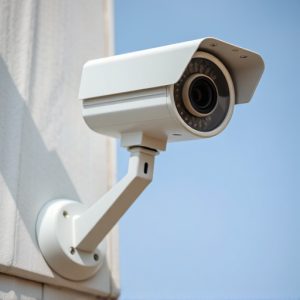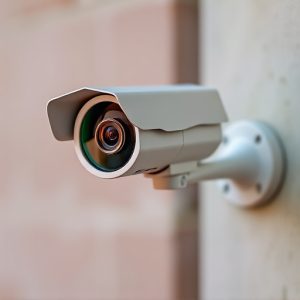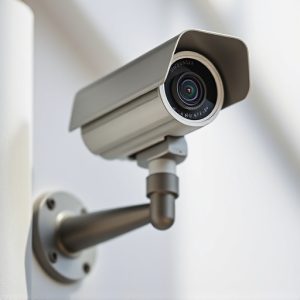Dummy Camera Mounting Guide: Maximize Visual Deterrence Effectively
Dummy cameras with blinking lights act as powerful deterrents by simulating real surveillance equipm…….
Dummy cameras with blinking lights act as powerful deterrents by simulating real surveillance equipment, protecting properties through strategic placement in residential or commercial settings. For optimal results, ensure clear visibility and mounting at eye level for comprehensive monitoring. Indoor installations should consider both functional and aesthetic aspects, while outdoor setups should block line-of-sight access points and randomize angles. Using high-quality, realistic cameras helps avoid legal issues and enhances overall security efficacy.
In today’s world of advanced security systems, dummy cameras with blinking lights have emerged as a cost-effective and effective deterrent. This comprehensive guide explores the art of securing these fake security cameras at optimal heights for maximum impact. From understanding their diverse applications to identifying key mounting factors, this article equips readers with best practices and helps them steer clear of common setup mistakes, ensuring both visual deterrence and peace of mind.
- Understanding Dummy Cameras and Their Uses
- Key Factors to Consider for Mounting Height
- Best Practices for Placement and Visual Impact
- Common Mistakes to Avoid When Setting Up Fake Security Cameras
Understanding Dummy Cameras and Their Uses
Dummy cameras, often equipped with blinking lights, serve as an effective deterrent in various security scenarios. These devices mimic real surveillance equipment, providing a visual warning to potential intruders that your property is under watch. By strategically placing dummy cameras, you can create the illusion of a comprehensive security system, thereby discouraging unwanted activities.
Their versatility makes them suitable for both residential and commercial applications. Homeowners can use them to enhance outdoor security or as part of an interior monitoring system. Businesses, on the other hand, often deploy dummy cameras to deter theft, vandalism, or unauthorized entry. With their distinctive features, these cameras play a pivotal role in creating an atmosphere of heightened security without the actual need for costly and complex surveillance systems.
Key Factors to Consider for Mounting Height
When determining the optimal mounting height for security cameras, especially dummy cameras with blinking lights, several key factors come into play. The primary concern is ensuring clear and unobstructed visibility of the area you aim to monitor. This involves considering the camera’s field of view—how wide or narrow it is—and aligning it accordingly. For instance, if you’re installing a dummy camera near an entrance or exit, positioning it at eye level can provide comprehensive coverage, making it effective as a deterrent and for detecting potential threats.
Another crucial aspect is lighting conditions. Dummy cameras with blinking lights suggest a focus on enhancing visibility during low-light situations. When mounting the camera, ensure that it’s placed where it can capture clear images even in darkness, using ambient light or the blinking lights to illuminate the scene effectively. This strategic placement guarantees that your security system remains vigilant and responsive around the clock.
Best Practices for Placement and Visual Impact
When placing security cameras, especially dummy cameras with blinking lights, consider both practical and aesthetic factors for optimal results. Mounting height plays a crucial role in ensuring effective surveillance. For indoor areas, positioning the camera at eye level or slightly elevated is ideal, providing clear line-of-sight without distorting perspectives. This standard placement helps deter potential intruders while capturing detailed footage.
Visually, well-placed security equipment should blend seamlessly into the environment. Dummy cameras with their blinking lights can be strategically positioned to mimic real surveillance, adding a layer of deception that enhances overall security. Avoid placing them in obvious spots, instead opting for subtle locations like corners or near windows and doors, where they serve as both deterrents and effective monitoring tools.
Common Mistakes to Avoid When Setting Up Fake Security Cameras
When setting up dummy cameras with blinking lights, it’s crucial to avoid common pitfalls that can compromise their effectiveness as deterrents. One major mistake is mounting them at too low a height; keeping them near eye level or slightly elevated ensures they appear more realistic and serve as a stronger deterrent. Additionally, failing to obscure the camera’s field of view by blocking line-of-sight access points, like windows or doors, reduces their impact.
Another frequent error is neglecting to vary mounting angles and positions; randomizing these elements makes the setup less predictable, enhancing the camera’s appearance as a genuine security device. Ignoring local laws and regulations regarding dummy cameras is also problematic; always ensure compliance to avoid legal issues. Moreover, using low-quality or poorly designed dummy cameras can undermine their convincing appearance; investing in realistic replicas with subtle blinking lights enhances overall efficacy.
In conclusion, dummy cameras with blinking lights offer a cost-effective security solution, allowing property owners and managers to enhance their surveillance without breaking the bank. By understanding the key factors for mounting height, adhering to best practices, and steering clear of common mistakes, you can maximize the visual impact and effectiveness of these fake security cameras, providing a sense of safety and security for your space.


